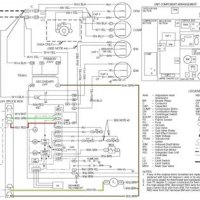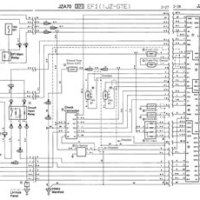The electrical wiring color code standards are an important part of ensuring safety and efficiency in the home. Electrical wiring is a complex system of interconnecting devices, and it is essential that the wiring and connections meet all safety regulations. In addition, proper color coding of wiring and components ensures that the system can be properly identified and serviced by qualified electricians.
Electrical wiring color codes are determined by the National Electrical Code (NEC) – the standard governing the installation, repair, and maintenance of electrical wiring in the United States. The NEC outlines the specific requirements for wiring color codes, and it is important to abide by these standards to ensure safety.
The most common color code in residential wiring is black, white, green, and bare copper. Black is used to denote hot wires, while white is used to designate neutral wires. Green is used to denote ground wires, and bare copper is often used for bonding between two conductors. Some variations of this code may also include red and blue. Red is typically used for live wires, while blue is used for switches, outlets, and fixtures.
Different color codes are also used for different appliances and devices. For instance, air conditioners, gas furnaces, and water heaters typically use a yellow wire for their ground connection, while refrigerators and ranges often utilize a brown wire for the ground connection. It is important to refer to the manufacturer's instructions when determining the correct color code for a particular appliance.
In addition to the residential wiring color code, commercial wiring systems also have their own specific color code requirements set forth by the NEC. Commercial wiring requires the use of multiple colors to represent the various circuits and components within a larger system. Electricians must always ensure that they are following the correct and up-to-date color code standards to ensure the safety of the system.
All in all, it is important to understand and follow the proper electrical wiring color code standards to ensure safety and efficiency in the home. By following the NEC and paying attention to the manufacturer’s instructions, homeowners and electricians can ensure that their wiring systems are up to code and that the connections are secure. Understanding the different color codes and their meanings is the key to a safe and efficient electrical system.

Ethernet Cable Wiring Diagram With Color Code For Cat5 Cat6 Etechnog

Wiring Color Codes Nec Electrical Standards 3 Phase Brady
Russia Wiring Color Codes Old Electrical Technology Facebook

Wiring Color Codes Nec Electrical Standards 3 Phase Brady
Electrical Wall Receptacle Outlet Wiring Diagrams Do It Yourself Help Com

Defining Standard Wire Jacket Colors In Cables

Electrical Wire Color Codes Deciphering What Each Means

Electrical Wiring Color Codes Important
:max_bytes(150000):strip_icc()/ElectricalWiring-1152863-2143c6964ddd48e2ad1fb664c296561e.jpg?strip=all)
Electrical Wiring Color Coding System
/electrical-wire-color-coding-1152863_hero-572ac6b6d4924c92942c55e31595fa3c.jpg?strip=all)
Electrical Wiring Color Coding System

Homeowner Electrical Cable Basics The Family Handyman

Electrical Standards For Europe And North America Compare To Look At Wiring Color Code Paperback Com

Electrical Wiring Color Code System What You Need To Nnow

A Guide To Electrical Wiring Colors Coding Graphic Products
/electrical-cable-cut-in-half-6466-000129-59fb9bf889eacc003793dac7.jpg?strip=all)
Color Coding Of Nonmetallic Nm Electrical Cable

Wiring Trailer Lights With A 7 Way Plug It S Easier Than You Think Etrailer Com

Correct Wiring Color Code Update 2020 Electgo

Building Electrical Wiring Color Codes






